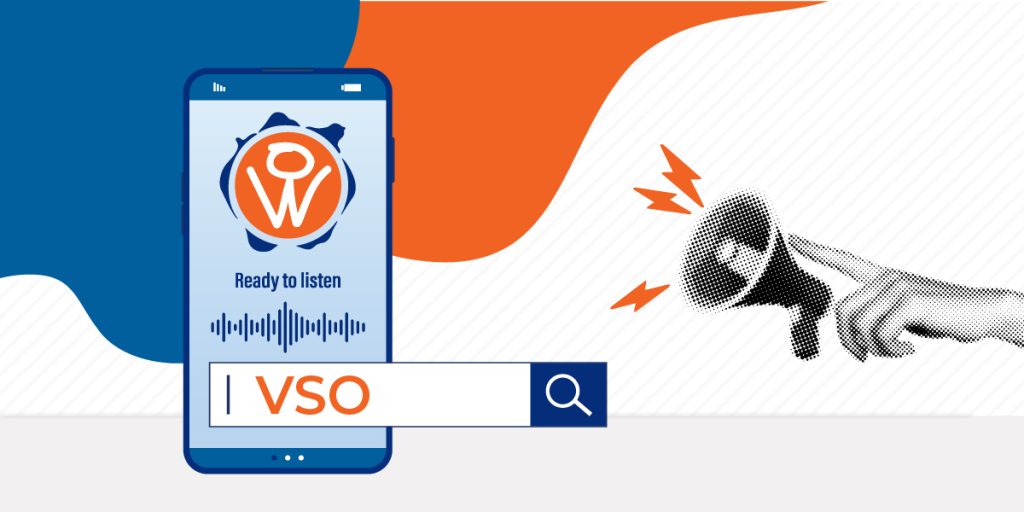As voice assistants like Siri, Alexa, and Google Assistant become increasingly integrated into our daily lives, optimizing your digital marketing strategy for voice search is no longer an option — it’s a necessity.
There are a lot of ways to approach voice search optimization (VSO). When starting out, we recommend the following five VSO tips:
- Make local search easy.
- Use long-tail keywords.
- Focus on mobile optimization.
- Improve accessibility.
- Keep your high-quality content relevant and refreshed.
How to Optimize Local Search
One of the fundamental steps to enhance your local search visibility is to include your location in your business name and website URL. This simple yet effective step can help ensure that search engines and users can quickly identify your business as a relevant local option.
Go a step further in making local search easy by adding your business information to local directories as well as through a Google Business Profile. By claiming and optimizing your business listing on these platforms, you increase your chances of appearing in local search results and maps. Make sure to provide accurate and up-to-date information, including your address, phone number, website, and business hours, to build trust and credibility with potential customers.
Claiming your business profile on search engines also makes it easier for customers to leave reviews of your company and services. Positive reviews not only boost your credibility but also significantly influence your local search rankings. Respond to reviews promptly and professionally to showcase your commitment to customer satisfaction and build a strong online reputation.
Why Long-Tail Keywords Matter for VSO
Long-tail keywords play a pivotal role in voice search optimization. Unlike broad, generic keywords, long-tail keywords are more specific and tailored to niche audiences, making them highly effective in improving search rankings. These detailed phrases often consist of three or more words, allowing businesses to target particular user queries with precision. One of the key advantages of using long-tail keywords is the lower competition associated with them. Since they are less commonly used than their shorter counterparts, businesses have a greater chance of ranking higher in search results when they incorporate these keywords into their digital marketing strategies.
How to Select Long-Tail Keywords
When a user performs a voice search, they are more likely to use natural language and ask specific questions. By focusing on long-tail keywords, businesses can align their content with these natural language queries, thereby enhancing the overall user experience. For instance, instead of optimizing for a general term like “ultra-low temperature freezers,” the target phrase might be “best ultra-low temperature freezers for energy efficiency.” This specificity ensures that the content provided is highly relevant to the user’s needs, increasing the likelihood of engagement and conversion.
Moreover, long-tail keywords align well with the advancements in natural language processing (NLP) technology used by voice assistants like Siri, Alexa, and Google Assistant. These assistants are designed to understand and interpret conversational language, making long-tail keywords particularly suitable for voice search queries.
How to Improve VSO Through Mobile Optimization
Slow-loading pages can frustrate users and negatively impact your search rankings. One of the primary ways to enhance your digital marketing strategy through mobile optimization is by focusing on loading speeds. Techniques such as compressing images, minifying code, and leveraging browser caching can significantly improve loading times, creating a smoother user experience.
User experience is a key factor in successful mobile optimization. A well-optimized mobile site should be easily navigable and interactive. This includes using clear and concise menus, touch-friendly buttons, and intuitive layouts. Ensuring that your site is easy to navigate helps users find the information they need quickly, reducing bounce rates and increasing engagement.
By focusing on mobile optimization, you not only enhance your Voice Search Optimization (VSO) but also create a more enjoyable and efficient experience for your users. A mobile-friendly site with a responsive design can lead to higher engagement, increased conversions, and improved search rankings, making it a vital component of any comprehensive digital marketing strategy.
Steps to Improve Website Accessibility
A user-friendly website that caters to the needs of all users, including those with disabilities, not only improves user experience but also boosts your search engine visibility.
To improve your website accessibility:
- An intuitive navigation with a logical site structure helps users find what they need with less frustration. It also helps search engines crawl your site more easily.
- Include alternative text descriptions for images. Alt text helps those with a visual impairment through a written description of images. It also helps search engines “see” your images, which improves your SEO.
- Use transcripts or captions for videos. While transcripts can help users who are deaf or hard of hearing, transcripts can be indexed by search engines and used easily by screen readers.
Why You Should Refresh Content
Maintaining high-quality content that remains relevant over time is crucial for effective Voice Search Optimization (VSO). Regularly updating your content keeps it fresh and engaging, making it more likely to be picked up by voice search algorithms. This involves reviewing and revising existing content to include the latest information, trends, and industry developments. It’s also important to make sure your content is high quality and well-researched.
Ready to improve your voice search optimization (VSO)? OffWhite Marketing can help.


